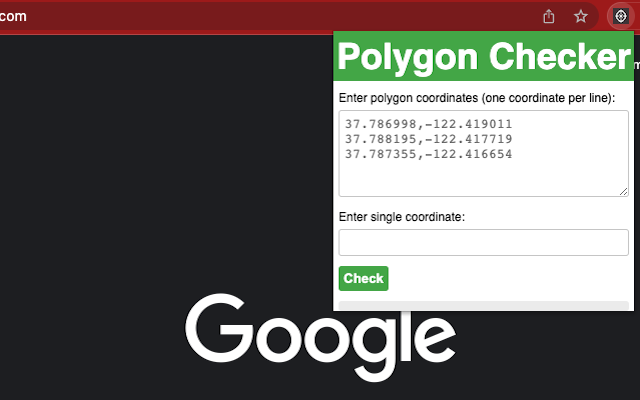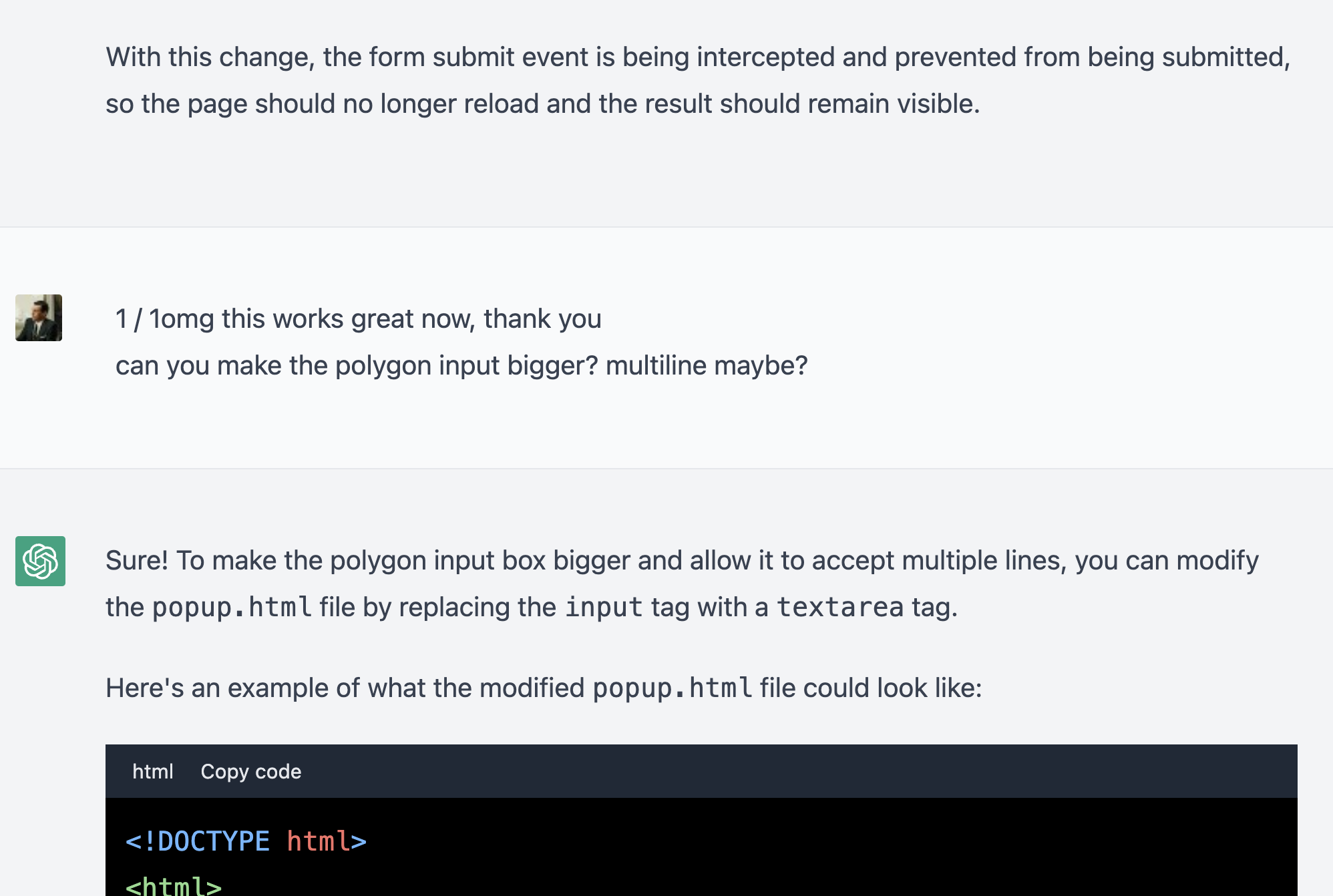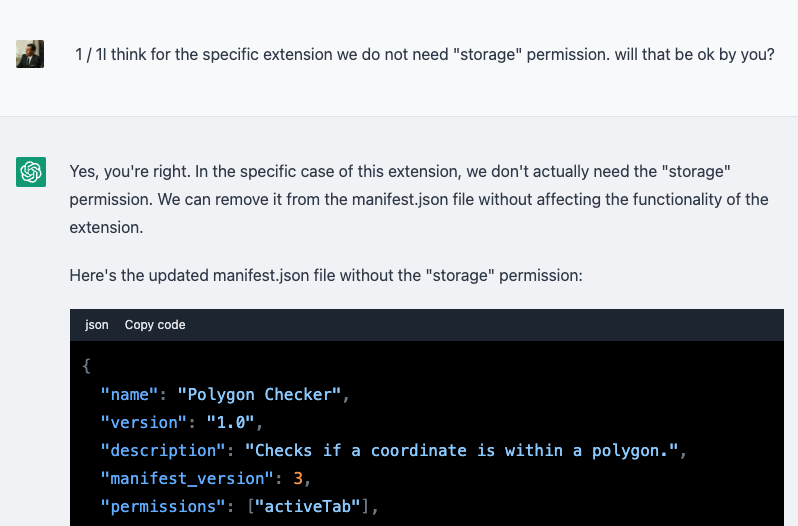I Wrote My First Chrome Extension Without a Single Line of Code
A colleague recently asked me if I knew of a QA tool that could check whether a coordinate was within a polygon. I replied that I didn’t, but suggested we try to build a tool like that with ChatGPT.
In this blog post, I will detail how I built a Chrome extension using ChatGPT without writing a single line of code, only following instructions and copy-pasting, despite having no prior experience in creating a Chrome app.
Read the full ChatGPT transcript here
Get it from Chrome web store: Polygon Checker
Download it from Github

The Idea
The goal was to build a Chrome extension using ChatGPT that could take a list of coordinates on a map (polygon) and a single map coordinate as input, and then output whether the single coordinate was within the polygon or not.
The Process
I began by explaining my idea to ChatGPT 3.5, a large language model trained by OpenAI. ChatGPT understood my requirements and provided me with the necessary guidance and code to build the Chrome extension.
The process was straightforward. ChatGPT walked me through the steps of setting up a manifest file, a popup.html file, and a JavaScript file to handle the extension logic. It also helped with debugging and fixing issues, such as the result disappearing too quickly.
The first version of the extension didn’t look right—for example, the polygon input field was too small. So, I asked ChatGPT to increase the input size, and together we created a user-friendly UI for the extension. See the screenshot below:
I noticed that the manifest file had unnecessary privileges, so I asked ChatGPT about them and why they were needed. ChatGPT agreed that they could be removed. See the screenshot below:
ChatGPT did not output a good SVG icon for the project—perhaps using GPT-4 would have done it better.
Surprisingly, ChatGPT even wrote the Github readme.md for the project, which I submitted as is.
##Reflections on AI Collaboration
Working closely with ChatGPT during this project has offered me a unique perspective on the potential of AI collaboration in product management. In particular, I’d like to highlight a few key insights I gained from this experience:
Accelerating development
The speed at which we were able to move through the various stages of building the Chrome extension was remarkable. ChatGPT’s ability to quickly provide accurate guidance, code snippets, and solutions to issues significantly reduced the time it took to develop the extension.
Bridging the knowledge gap
I’ve never before developed a Chrome Extension before. However, ChatGPT helped bridge this gap by walking me through the process step by step, enabling me to build a functional Chrome extension despite my limited technical background.
Enhancing creativity
AI collaboration allowed me to focus more on the creative aspects of the project, such as refining the user interface and brainstorming potential use cases. With ChatGPT handling the technical details, I could devote more time and energy to enhancing the overall user experience.
Potential challenges
Despite the many benefits of AI collaboration, there were occasional challenges. For instance, the SVG icon generated by ChatGPT was not satisfactory. This highlights the importance of human oversight and the need for AI models to continue evolving in order to tackle a wider range of tasks effectively.
Conclusion
Working on this project felt like collaborating with a co-worker, as we iterated together to improve the outcome.
This experience has shown me how AI technology can empower people to create and innovate, regardless of their technical expertise.
As ChatGPT and other language models evolve, I can only imagine how they will revolutionize software engineering, enabling more people to build amazing products and tools.
